If you’re a waste management professional, it’s likely that you’ve dealt with the same challenges that MRF operators have been telling us about for several years.
A lack of visibility into waste streams, low-quality infeed material, staffing shortages and non-recyclable packaging design combine to present serious hurdles to recovery.
Traditional sorting and sampling processes aren’t giving waste managers the support they need. How confidently can you rely on your current operations to give a detailed answer to the following questions?
- How much does your yield fluctuate?
- How much valuable product are you losing to residue?
- How representative is your sampling procedure?
- How effective is your reporting given the effort and time spent?
You may have all the information you need to answer one or more of those questions. If that’s the case, click on the question that you’re least confident in to skip ahead!
If you’re like many of the facility operators we speak to, though, a lack of composition data will make it difficult to answer any of them with real accuracy.
That’s where an AI waste management plan comes in. Here’s how AI can help you answer each of those crucial questions (and take action) with confidence:
How much does your yield fluctuate?
The current situation
Yield is the amount of material produced after a sorting process that is currently opaque for most MRFs and PRFs.
We’ll talk about manual sampling again later, but its limitations apply to yield, too. Spot sampling material can’t provide the object-by-object understanding needed to accurately predict the volume and purity of your final product.
Recruitment challenges aside, hiring more sorting and sampling staff is a costly solution, and won’t come close to providing the necessary transparency.
For a truly accurate insight into the factors that will influence your final yield, detail is needed from the infeed stage through to sorting, quality control, residue and baler lines.
Why it’s a problem
If you can’t accurately predict fluctuations, it’s difficult to prepare for them with any level of certainty. As more recovery facilities adopt sorting and sampling technology, expectations surrounding consistent bale purity will rise, too.
It’s fast becoming a competitive necessity to take a proactive approach to increasing yield. Without full visibility into waste streams, anything other than reactive management is a tall order.
How AI provides the answer
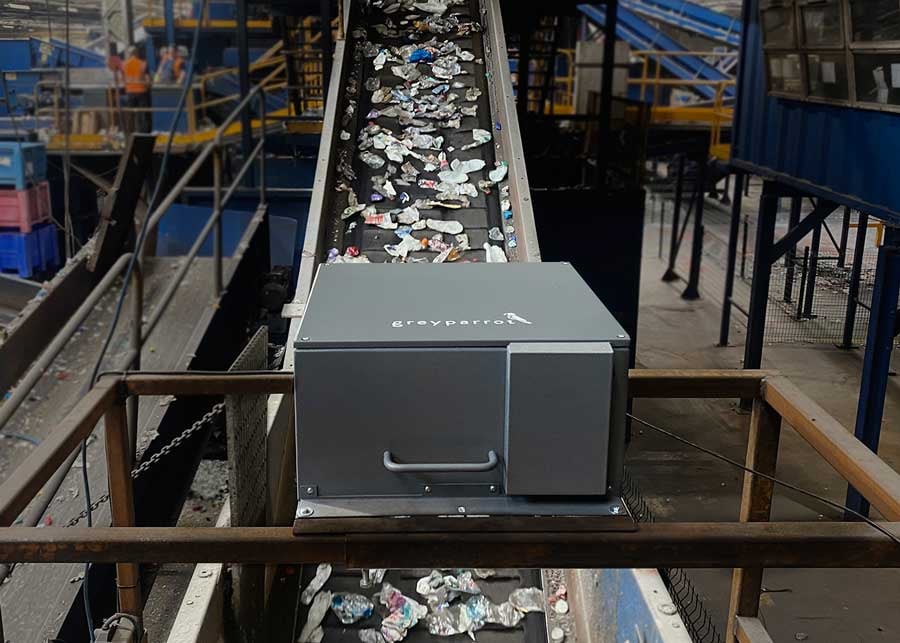
It’s far more difficult to scale a small team of sorters than it is to scale an AI waste management plan. Computer vision monitors like ours are trained on millions of data points, and can track and analyse waste objects in real-time.
AI accuracy often out-performs manual sorters, and can even work on high-speed conveyor belts that are too fast for pickers to sort on effectively.
Thanks to an open API, our platform can integrate with robotic sorters, too — automating even more of the sorting process and eliminating human error. In other words, you don’t have to slow your infeed-to-yield process on AI’s behalf.
Low latency means that data is available to waste managers as soon as it’s captured. It’s then possible to make the real-time sorting adjustments needed to achieve a consistent yield of purer material. The added benefit of all that data is that you can actually prove purity (and charge more for your bales despite heightened stream contamination).
How much product are you losing to residue?
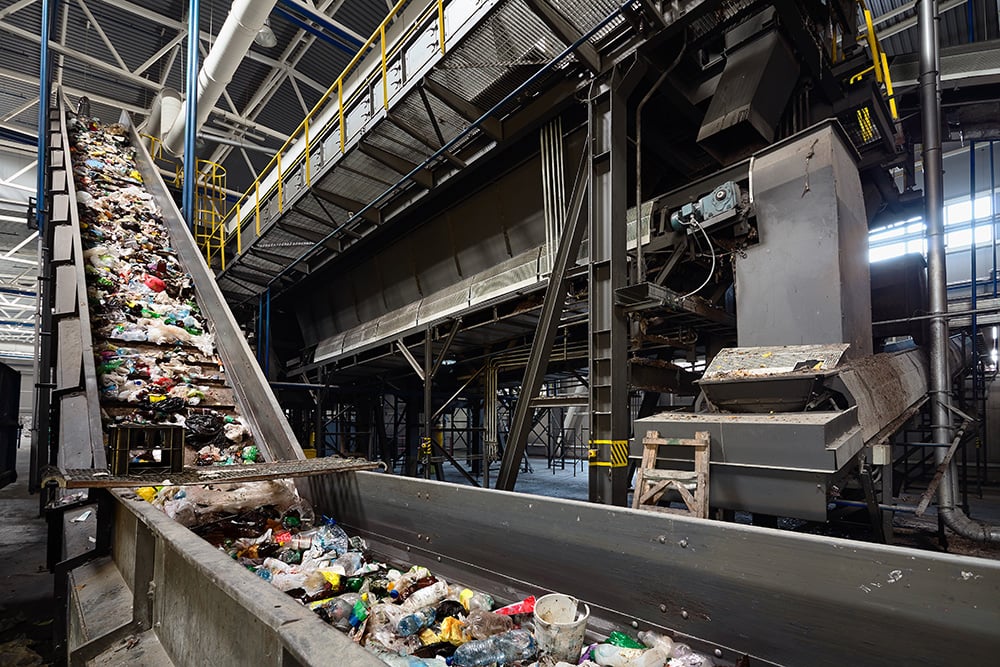
The current situation
This challenge is down to the same lack of visibility that makes it hard to predict yield. Individual staff members can monitor residue lines and recover valuable material, but the scale of product loss is far bigger than even the most dedicated sorting team.
We’ve seen it for ourselves, identifying £1.6 million worth of material lost to residue lines every year — in a single PRF.
Traditional sorting misses far too much valuable material, but without detailed composition data, it’s impossible to know how much.
Why it’s a problem
We’re still sending millions of pounds worth of reusable material to landfill. That’s an abstract price-tag for most of the value chain, but if you’re a waste manager, those are millions that you could be directly recovering — especially as further legislation is introduced that requires producers to use recycled material.
How AI provides the answer
Monitor your residue line with an AI-powered computer vision unit, and you’ll know exactly how much lost material is worth. This has proved such an important question for MRFs that we recently introduced a ‘financial value’ metric, which allows operators to enter the prices-per-tonne for target materials, and track how much value ends up in residue.
Track waste composition further upstream at the infeed or sorting lines, and you’ll know exactly what proportion of your overall waste stream is being lost — and where adjustments are needed.
How representative is your sampling procedure?
The current situation
Manual sampling is still an industry requirement. The problem is that in many cases, it’s still the industry standard, too. If you work with near-homogenous waste streams, tracking just 1% of the waste you process may provide fairly representative results. In many of the facilities we’ve encountered, though, streams are rarely that cooperative.
Why it’s a problem
Too much is being asked of waste managers if they aren’t able to accurately analyse 99% of their waste streams. That data gap leads to lost profits, larger landfills, and a missed opportunity to influence packaging recyclability at the source.
Relying too heavily on manual sorting and sampling also presents a health and safety risk to staff, who are already difficult enough to recruit and retain.
How AI provides the answer

Current regulation means that manual sampling is still required. That doesn’t mean it can’t be supplemented and improved with automation.
Traditional sampling means that the waste industry is forced to look through a keyhole at their waste streams. AI-powered waste analysis opens the whole door by providing a scalable means to track far more than the objects on the sampling belt.
By tracking composition on infeed, sorting, residue or baler belts, that 1% of insight quickly grows to 100%.
Instead of relying on a team of samplers, an AI waste management plan provides instant access to all stakeholders through a detailed waste analytics dashboard.
How effective is your reporting?
The current situation
Compliance and performance reporting are a necessity, but both require even more time of an already-busy waste management team. Thanks to the limitations of manual sampling and methods like ‘dressing the bale’, it’s currently difficult to entirely trust the accuracy of reports.
Why it’s a problem
That’s an issue for regulators, but it’s an even more pressing concern for internal stakeholders. Aside from driving price, purity can be a requirement for certain use-cases, like food-grade recycling.
Without accurate, tailored and regular reporting, management can’t make informed adjustments to existing plants, or to those that they’re planning to build, and today’s challenges will go unsolved.
The introduction of legislation like extended producer responsibility (EPR) and plastic taxation will also require more detailed reporting from MRF and PRF operators on top of already time-consuming internal reporting.
How AI provides the answer
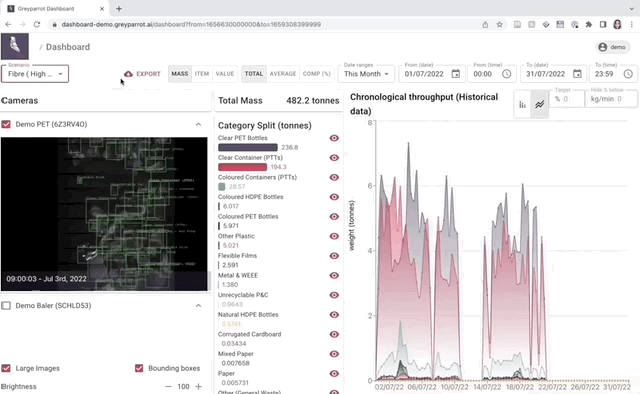
To avoid treading water for the sake of reports, automation is vital. Employing AI-powered computer vision to track waste streams doesn’t just capture data in real-time.
Use the right platform, and it also translates that live data to an analytics dashboard. That’s useful when it comes to adjusting day-to-day sorting processes, but it’s also a valuable store of accurate data that’s been collected automatically.
We’ve introduced an exporting and reporting feature that means you can create a one-off report to examine a specific incident, or automatically generate daily, weekly, monthly, quarterly or yearly reports.
To automate reporting, just filter data for specific stakeholders and use-cases, decide who should get it (and how often), then publish your template. That’s all the action you need to take — reports will then be exported and sent automatically at the intervals you’ve selected.
How an AI waste management plan can prepare MRFs for the future
In one way or another, a lack of waste composition data is making an already-challenging job even more difficult for waste managers. If you work in an MRF yourself, chances are you’ve wished for a definite answer to one of the four questions above at some point in your career.
While policy-makers and thought leaders are concerned with the ‘what’ of the circular economy, it’s down to the waste management industry to figure out the ‘how’. Without more insight into the material being passed down through the value chain, it’ll remain difficult to answer those ‘hows’.
AI presents an opportunity to get that insight — and a lot more. The visibility it offers won’t just help you avoid reactive management. Armed with data on recyclability, material value and the fate of consumer products, it’ll help the entire waste management industry evolve from a reactive member of the value chain to one of its driving forces.


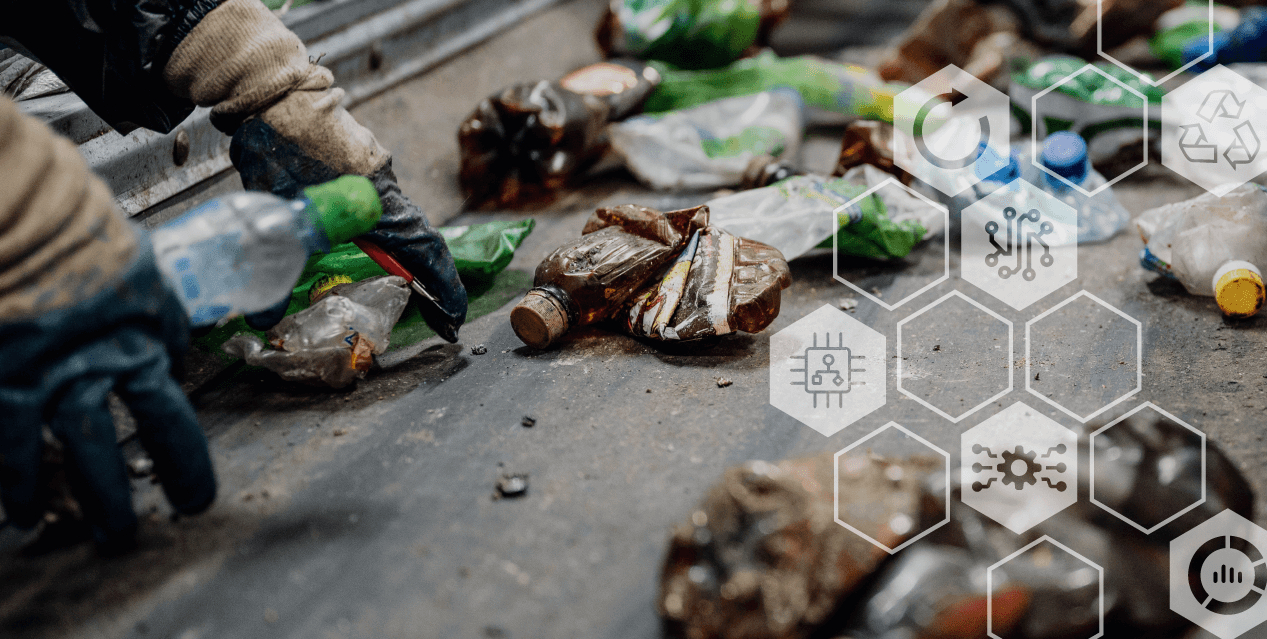

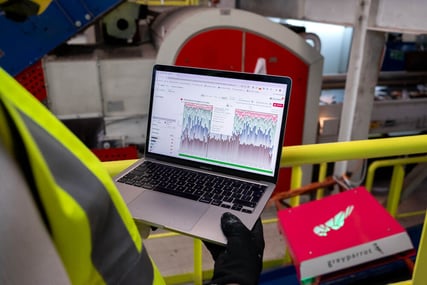
.png?width=501&height=285&name=IMG_6004%20(1).png)